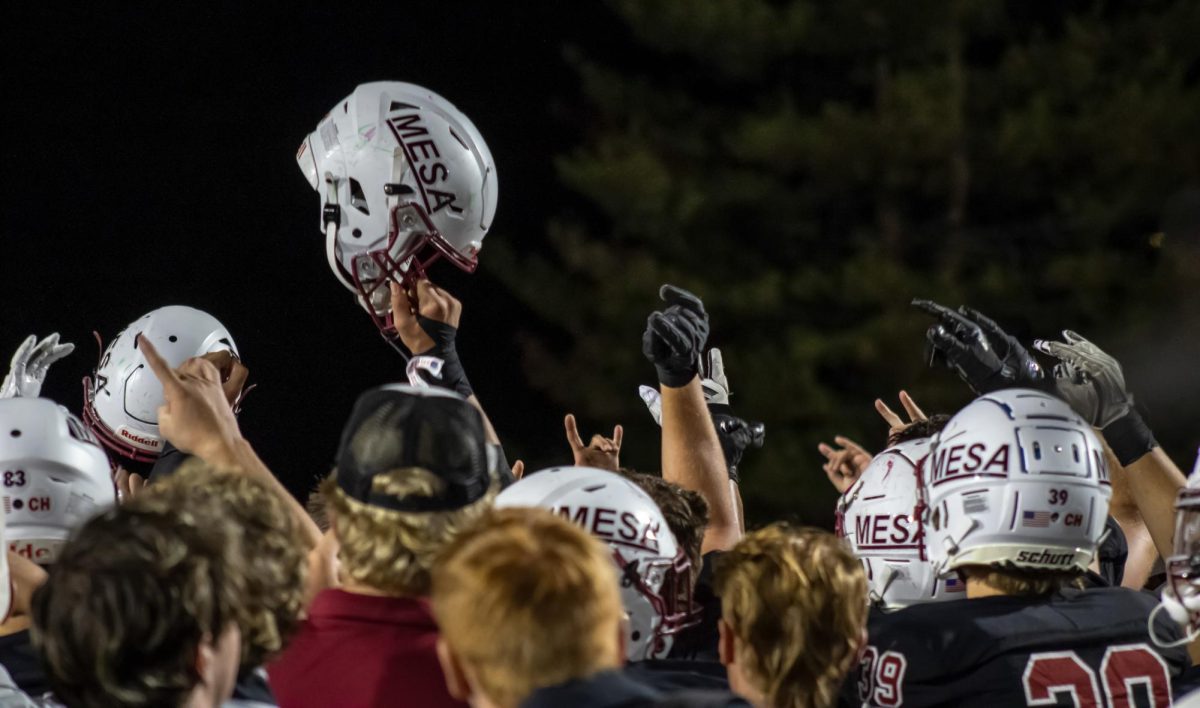Tyler Fransen
I am well aware that this entire plan hinges on Colorado beating Washington and the Huskies so if this falls flat, the guy to blame is Bryce Reedy, Editor-in-Chief of the Criterion Newspaper, because he’s a Buffs hater.
The Buffaloes of the University of Colorado are making college football history. Over the past few years, under head coach Mike MacIntyre, the CU Buffs have been less than stellar, especially in the PAC-12.
From 2013-2015, MacIntyre amassed a win-loss record of 10-27 overall, 2-25 in the PAC-12. This abysmal set of performances from the Buffaloes gave everyone in the media, every reason to count them out for this season.
Lo and behold, the CU Buffs of 2016 have an overall record of 10-2, including a 8-1 record in the PAC-12. Not to mention, they are current PAC-12 South Division Champions, and will play the fourth ranked Washington Huskies in Santa Clara, Cali. for a shot at the PAC-12 conference title. You know what happened the last time a Colorado based football team played for a championship in Santa Clara? The Denver Broncos won Super Bowl 50. Just saying.
Regardless, the CU Buffs have had a very good season, and now have a legitimate shot at making the College Football Playoff (CFP). How is this possible?
For starters, it has to come down to CU beating Washington to clinch the PAC-12, which by the way has been one of the best conferences in football this year. The PAC-12 had seven total teams at any given moment, rank in the top-25, including Washington, Colorado, University of Southern California (USC), Stanford, Washington State, Utah and briefly Oregon.
CU played everyone on this list except for Washington, and lost only once, to USC. Not to mention, the only team that fell out of rankings was Oregon, whereas everyone else either started ranked and kept it that way, or were unranked in the beginning and jumped up as the season went on.
If you take into account, every team that was ever ranked at some point in the season, throughout their schedule the Buffs played a total of six games against ranked opponents, winning four of them against Oregon, Stanford, Washington State and Utah. The two ranked opponents they lost to were USC and Michigan.
So this puts CU in good standing, especially when you consider that Washington has only played five ranked opponents, winning four of them. Coincidentally, the one team that Washington lost to was also USC. And, oh by the way, Michigan and CU nearly could have been a CU victory if they stopped the game after the first quarter, but that’s neither here nor there.
The larger point is, the two teams contending for the PAC-12 title have been very good against ranked opponents, so where does that stack up against the competition that currently hangs on the cusp of the CFP?
Oklahoma played a total of five ranked teams throughout the year including Houston, Ohio State, Texas (yes they were ranked at one point in the year, until everything hit the fan), Baylor and West Virginia. They won three of those games, but lost to Houston and Ohio State, and by the time they beat West Virginia, Baylor and Texas, all three of those teams had fallen out of the rankings.
Michigan was pretty much knocked out of the CFP by Ohio State, but for sake of argument, let’s look at their schedule. Much like Oklahoma, Michigan played five ranked opponents, winning three and losing two. The only difference is, Michigan lost to teams that are still ranked in the top-25, with Ohio State and Iowa.
Wisconsin played five ranked opponents, winning three to LSU, Iowa and Nebraska, but losing two to Ohio State and Michigan.
Penn State played four ranked opponents, splitting the difference with wins against Ohio State and Iowa, and losses to Pitt and Michigan.
So essentially, CU has played more ranked opponents and has fared better than most of the teams on this list, and has done so in one of the strongest conferences in the nation. Now comes the challenge ahead, and it’s all thanks to the Big-10 and Big-12’s cluster of confusion.
Essentially what the CFP selection committee is going to have to decide, is whether or not to include the PAC-12 Champion in the playoffs. It wouldn’t be so complicated if you didn’t take into account the absolute chaos of the Big-10, and its title game between Penn State and Wisconsin. Despite Ohio State and Michigan ranking higher and having better records, Penn State and Wisconsin are playing for the Big-10 title, which could create problems for the Buckeyes of Ohio State. Not to mention, we don’t know if the committee values championships in the PAC-12 more than they do in the Big-12, since Oklahoma is right on the cusp. That’s assuming Oklahoma beats Oklahoma State on Saturday to clinch the Big-12, and this is also assuming Clemson beats Virginia Tech to clinch the ACC.
Now if you want to get into a truly nightmare scenario, if Florida beats Alabama, (which they probably won’t because Alabama is just too good), that makes this whole thing a complete and utter mess, raising more and more questions about whether or not conference championships truly matter to the selection committee.
If the CU Buffs are going to have any sort of a chance at the College Football Playoffs, the most important thing they need to do, is win against Washington. At that point, I believe CU has a strong enough case to say that they belong in the playoff.
They have played more ranked opponents than those on the cusp, they won more games against ranked opponents and strong conference opponents, and the games they lost to were games seemingly everybody else lost to.
Not to mention the selection committee, I think, would just gleam at the thought of putting arguably the greatest Cinderella story of the 2016 college football year, into the playoffs.
Now, do I think CU has a chance of making a dent in the CFP? No. Assuming we take the place of Washington in the rankings and jump to the four seed, we would likely play Alabama in either the Peach Bowl or the Fiesta Bowl. Either way, we’d be killed, and it would not be swift either. So for now, we’ll just wait and see if history can continue for these CU Buffs.








